Fast Facts
- When: 11th to 14th April 2024
- Where: Augusta National Golf Club
- Watch: Sky Sports Golf & Main Event
- Official Website: The Masters
The Masters is one of the highest profile sports tournaments in the world. It traditionally makes up the first part of the four majors of golf and with that come a certain prestige that many golf tournaments fail to recreate.
The 2024 tournament will be the 88th edition of this famous event, and as always it will take place at the Augusta National Golf Club in Georgia, south eastern USA.
Unlike most regular golf tournaments that can often get overlooked by the bookies when it comes to offers, for the Majors there are some interesting promotions you can get your mitts on – including enhanced places (up to 12!), money back if specific players win and, of course, some free bets.
Existing Customer Free Bets & Money Back Offers
Please Note: This event has now ended.
Stats Articles
- How Many Birdies Are There at the Masters?
- Which Golfer Has Scored the Most Birdies at the Masters?
- Has an Amateur Ever Won the Masters?
- How Often is there a Hole-in-One on the PGA Tour?
- The Longest & Shortest Courses on the PGA Tour
- The Players Who Have Won the Most Majors in Golf - Can Jack Nicklaus' Record Ever be Beaten?
- Who Has the Longest Drive on the PGA Tour?
- Which Country Has Won the Most Majors in Golf?
- How Often Does The Favourite Win One Of Golf’s Majors?
- What is the Most Difficult Hole at The Masters?
- How Often Does the Third Round Leader Win a Golf Major?
- How Often Do The First Round Leaders Win a Golf Major?
- How Often is There a Hole In One at the Masters?
- Golf Grand Slam Winners: Who Has Won All Four Majors?
Event Stats
Winners of the Last 10 Masters Tournaments
| Year | Champion | Score | Cut | 1st Round Leader(s) | Par 3 Contest Winner |
|---|---|---|---|---|---|
| 2024 | Scottie Scheffler | -11 | +6 | Bryson DeChambeau | Rickie Fowler |
| 2023 | Jon Rahm | -12 | +3 | Hovland/Koepka/Rahm | Tom Hoge |
| 2022 | Scottie Scheffler | -10 | +4 | Im Sung-jae | M. Weir/M. Hughes |
| 2021 | Hideki Matsuyama | -10 | +3 | Justin Rose | Cancelled |
| 2020 | Dustin Johnson | -20 | Ev | Johnson/Casey/Frittelli | Cancelled |
| 2019 | Tiger Woods | -13 | +3 | DeChambeau/Koepka | Matt Wallace |
| 2018 | Patrick Reed | -15 | +5 | Jordan Spieth | Tom Watson |
| 2017 | Sergio Garcia | -9 | +6 | Charley Hoffman | Cancelled (Rain) |
| 2016 | Danny Willett | -5 | +6 | Jordan Spieth | Jimmy Walker |
| 2015 | Jordan Spieth | -18 | +2 | Jordan Spieth | Kevin Streelman |
Schedule
- Practise – Monday 8th to Wednesday 10th April 2024
- Par 3 Contest – Wednesday 10th April 2024
- 1st Round – Thursday 11th April 2024
- 2nd Round – Friday 12th April 2024
- 3rd Round – Saturday 13th April 2024
- 4th Round – Sunday 14th April 2024
About The US Masters
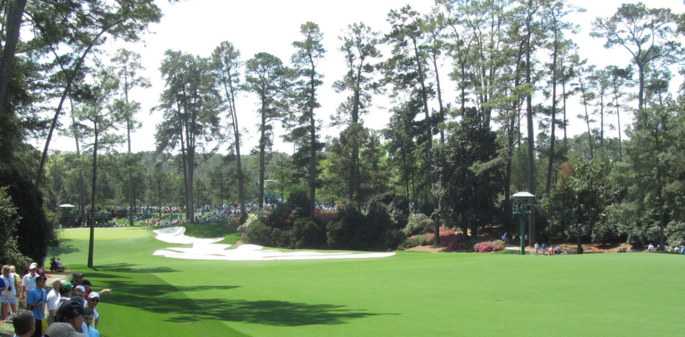
The Masters is one of the most anticipated golf tournaments in the world, being the first of the four Majors that are played each year. It is held annualy at the same venue, which is the Augusta National Golf Club in the US state of Georgia.
The course is arguably as well-known as the tournament, famed for its picture-perfect playing conditions and challenging layout. It measures 7,475 yards in total, making it a favourite for long hitters. A great deal of accuracy is required in order to succeed, with the course testing even the best in the game.
Augusta is so well manicured that it’s been reported that if a branch from a tree has to be cut down then they would paint over the stub on the tree to make it look as idyllic as possible. Another example of this perfectionist attitude towards the upkeep of the course is the use of a ‘shimmer’ spray which makes the flowers glisten in the sun. Whilst that may seem over-the-top for a golf tournament, it really is what makes the Masters unique.
The course at Augusta was the brainchild of golfing legend Bobby Jones. Construction started in 1931 and the course opened fully in 1933. The first official Masters tournament was held in 1934, when it was then known as the ‘Augusta National Invitational’ Horton Smith won the tournament. It was in 1939 when the tournament took on the present day name and has remained ‘The Masters’ ever since.
Tournament Format for the Masters
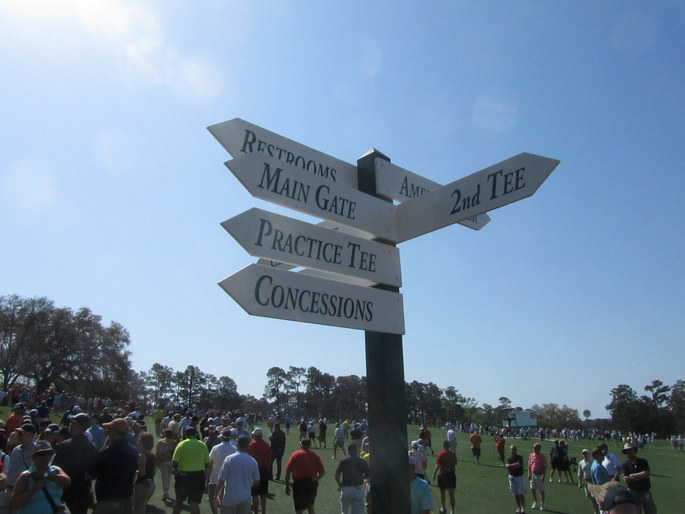
The Masters is seen as where the golf season really begins for a lot of fans, due to the fact that it is the first major of the year. Tournaments prior to the Masters are seen as a warm-up for the main event, which is held in the second week of April and has been since 1948.
Unlike the other majors, the Masters is strictly an invitational event. Although, the majority of the invitations are sent to players who meet a certain qualifying criteria, the Masters Committee invites some players from around the world at their own discretion.
Some of that criteria includes the following: previous champions; any Major winner over the last five years; winners of the Players Championship; Amateur champions from numerous parts of the world; and the top fifty ranked players as seen by the official world golf rankings.
With a few exceptions, the first round of the Masters gets underway on the second Sunday in April. There are four rounds of golf to be played, with eighteen holes of golf played on each round and one round played per day. The groups are split up into threes for the first two rounds and then pairs for the second two. There’s a cut-off point after thirty-six holes, designed to reduce the side of the field ahead of the weekend. Since 2013, players within ten shots of the leader or within the top fifty golfers make the cut. Any players tied for the lead after four days of golf then enter a sudden-death play-off.
The Green Jacket & Other Traditions

The Masters boasts a number of traditions, with the presentation of the Green Jacket being the most notable of them. It is due to the fact that members of Augusta National wear a green sport coat when on the grounds of the club and each winner of the competition becomes an honorary member.
The tournament’s victor has been presented with a Green Jacket since 1949, though they have unofficially received one since even earlier. It is initially given to the winner in what is known as the Butler Cabin but is then given to them again on the eighteenth green in front of those that have come to watch the final day’s play. They get to keep the jacket for a year but it is then returned to the club where it remains until the player next returns to the course.
The rules state that the jacket must not to leave the golf club after the first year, though Gary Player, Seve Ballesteros and Henry Picard have all broken this unspoken rule for differing reasons.
Tradition dictates that the previous year’s winner presents the champion with their jacket. When Jack Nicklaus won back-to-back tournaments for the first time in 1966 this obviously wasn’t possible, so he simply put the jacket on itself. When Nick Faldo won consecutive Masters in 1990 he was presented with the Green Jacket by the chairman of the golf club, which is something that was repeated when Tiger Woods won his second consecutive Masters in 2002.
In 2017 a Green Jacket was sold at auction for $139,000 dollars, having been found at a thrift store twenty-three years earlier.
Awards & Other Customs

There are other fun traditions that take place at the Masters each year. As an example, the player who scores the lowest each day is given a crystal vase, whilst players who manage to score a hole-in-one or who get an Albatross are given a large bowl made of crystal. Every time a player scores an Eagle they are given a pair of goblets that are also made of crystal.
The winner receives a gold medal along with their Green Jacket. There is also a trophy which is silver and that shows the clubhouse at Augusta. Each Champion receives a replica with the actual trophy remaining at the Augusta National.
Since 1951 the runner-up has been given a silver medal. They are also given a silver salver, which is a tradition that dates back to 1978.
In 1952 the organisers of the Masters decided to acknowledge the best performance by an amateur golfer by giving them a Silver Cup. This was given to the amateur that made the cut with the lowest score. Also, two years later, the amateur runner-up began receiving a silver medal.
Other Masters traditions include the hitting of the first ball by a former legendary player, which has been done since 1963. That was eleven years after the first Champions’ Dinner was held. This sees the defending champion honour past champions of the event with a dinner on the Tuesday evening ahead of the first round two days later. The defending champion selects the menu which tends to be food from their home region.
The last point of note is the fact that Masters winners are automatically invited to take part in each of the other three Majors for the five years after their victory, plus membership of the PGA Tour for the same period of time. This is designed to give them a sense of career security, though the prize money of in excess of two million dollars probably also helps.
Bobby Jones and the Building of Augusta
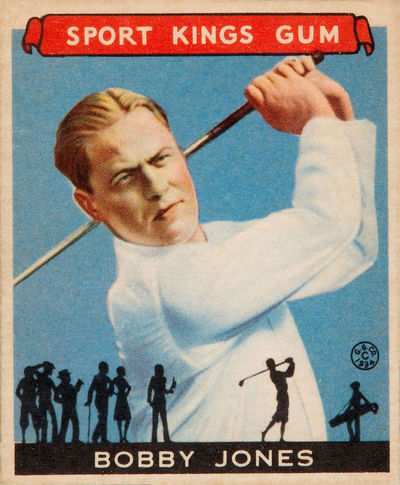
Bobby Jones had long been thinking of building a golf course for when he retired from the game, searching the US for a decent spot to solidify his dream. He turned to an investment banker named Clifford Roberts for advice and the pair discovered a former plantation and plant nursery in Atlanta, Georgia. Jones was reported to have said, “Perfect! And to think this ground has been lying here all these years waiting for someone to come along and lay a golf course upon it”.
He worked with a British golf course designer named Alister MacKenzie to create the course, using his experience to create one that made use of the natural features of the location it was built on.
MacKenzie has designed more than sixty courses before he was invited to try his hand at Augusta, including the Royal Adelaide Golf Club in Australia and Fray Bentos Golf Club in Uruguay. There’s little question that the National Golf Club in Georgia was his crowning glory, though he died before the first Masters tournament was played at it. The inaugural Masters took place in March of 1934 and boasted a prize pot of $1,500.
Interestingly, that first version of the Masters saw the current back nine holes played first and the current front nine played last, with the reversal not taking place until the following year. Jones had asked the United States Golf Association to play the US Open on the course but they’d refused. As a result, the initial tournament was just for him and his closest friends.
Palmer, Player and Nicklaus Put The Masters on the Map
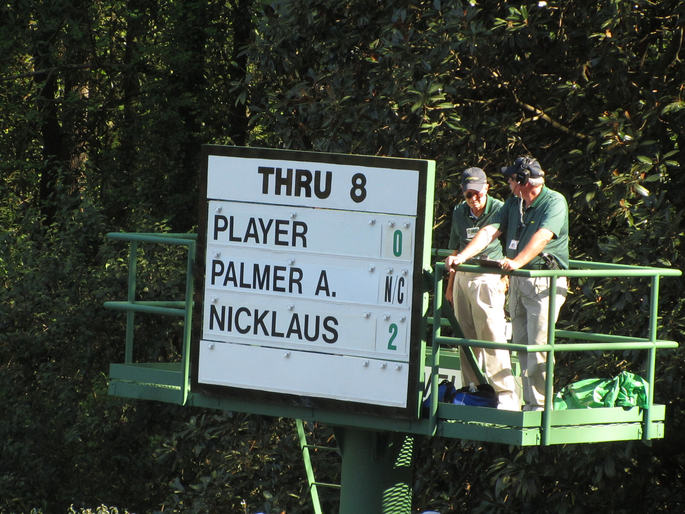
In 1935 a golfer named Gene Sarazen hit a shot that earned the moniker of ‘the shot heard ‘round the world’ when he holed from the fairway with his second shot on the par five fifteenth, giving himself an Albatross and forcing a play-off with Craig Wood.
Even so, the Masters didn’t yet have the reputation that it enjoys today. It wasn’t helped by the fact that it didn’t take place between 1943 and 1945, with the course being used raise turkey and cattle in order to help with the war effort. It wasn’t until Arnold Palmer, Gary Player and Jack Nicklaus began to dominate that people truly started to pay attention to what was going on at the Peach State golf course.
Palmer got the excitement underway in 1958 when he won the tournament by one shot, but it was when he repeated the trick in 1960 and the golfing world began to sit up and take notice. He was two shots behind Ken Venturi as he began playing the seventeenth but birdied the final two holes to win by one. He then won again in 1962 and 1964, laying down a marker for other players to follow.
Jack Nicklaus did exactly that, emanating Palmer by winning his first Masters in 1963 by just a single stroke. It wasn’t anywhere near as close when he won his second Masters two years later, causing Bobby Jones to say that he played a game ‘with which I am not familiar’ when he set the then course record of seventeen under par. ‘The Golden Bear’ became the first player to win back-to-back Masters when he beat Tommy Jacobs and Gay Brewer in an eighteen-hole play-off the following year.
In 1961, Gary Player became the first non-American golfer to win the Masters when he defeated Arnold Palmer. Thirteen years later he won the Green Jacket again, taking it with two shots to spare. Four years after that and at the ripe old age of forty-two, Player won the tournament for the third and final time.
He may not have won it since, but that didn’t end his love affair with the tournament. He went on to make the cut twenty-three times consecutively, which is a joint-record with Fred Couples, playing in the Masters fifty-two times in total. The South African is one of just five golfers to date to have won the Grand Slam of the Masters, the US Open, the British Open and the PGA Championship, with the others being Gene Sarazen, Ben Hogan, Jack Nicklaus, and Tiger Woods.
Roberto De Vincenzo Signs Away His Chances in 1968
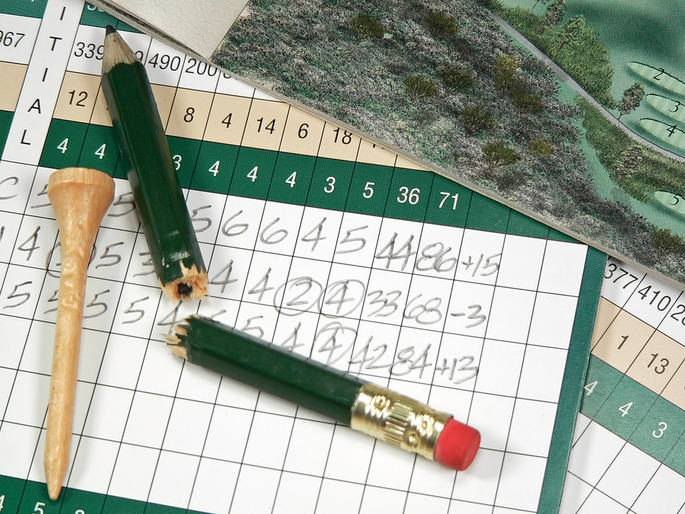
Whilst the 1960s should have been know exclusively about the play of some of the best golfers ever to grace the game, it’s arguably best-known for what happened in 1968.
Roberto De Vincenzo, the Argentinian golfer, was playing brilliantly and made a birdie three on the seventeenth. Unfortunately for him, his playing partner Tommy Aaron wrote it down as a four and De Vincenzo signed the score card at the end of the round. According to the rules of golf, if a player signs their card then they accept the score that is written on it, even if it’s incorrect.
The Argentinian should have played a play-off against Bob Goalby, but instead the American claimed victory by one point and took home the Green Jacket. More controversially by modern standards however is the fact that a black player wasn’t allowed to play on the course until Lee Elder did so in 1975. It would be a further fifteen years before the club accepted its first black member.
Europeans Share the Spoils in the 80’s and 90’s

In the twenty years between 1980 and 2000, non-Americans picked up eleven wins at Augusta National. It remains the strongest run from players not born in the United States in any of the three Majors played in the US.
In 1980 it was Seve Ballesteros who took home the Green Jacket, becoming the first European to win the Masters. Six years later saw the return of Jack Nicklaus, who beat Gary Player’s record of being the oldest golfer to win the event when he did so at the age of forty-six. It was also his sixth victory in the competition, which remains a record. Yet of all of the non-Americans who have won the Masters, it is one that has never won it that is perhaps most closely associated with the event.
Greg Norman’s Masters Woes
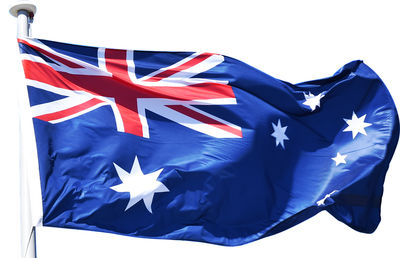
Greg Norman should’ve won at least one Green Jacket during his career, but the pressure of doing so seemed to get to him every time he was within a shout of managing to do so.
In 1987 for example, he was in a sudden-death play-off for the Masters title against Larry Mize only to see the American hole a forty-five yard pitch to birdie the second-hole of the play-off and win.
Nine years later and he looked nailed on for a victory, tying the course record with an opening round of sixty-three and having a six-stroke lead over Englishman Nick Faldo heading into the final day. Faldo had already won the Masters twice, so he wasn’t phased by the Great White Shark’s impressive lead and shot sixty-seven in the final round whilst the Australian hit seventy-eight and lost by five shots.
Tiger Woods Emerges as a Sporting Superstar
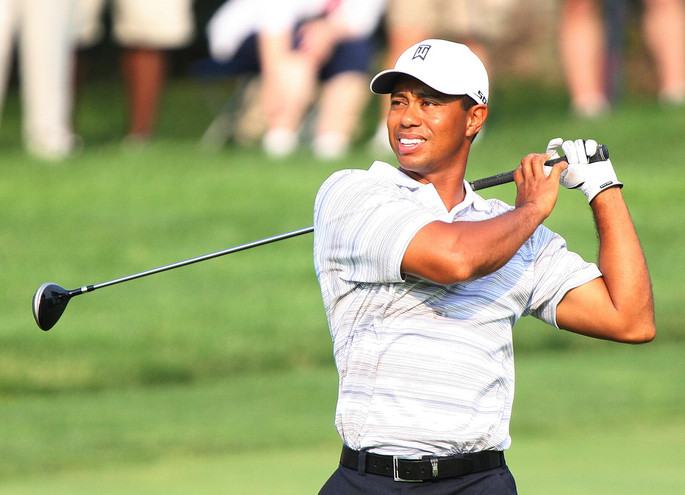
Whilst the 1980s and 1990s might have been the time for non-American golfers, it was a period of time that was rounded off by the emergence of one of the country’s greatest ever players. Aged just twenty-one, Tiger Woods broke the Augusta National course seventy-two hole record by twelve shots, winning the 1997 tournament by twelve shots.
Four years later and he won it again, seeing victory in his fourth straight Major in what was dubbed the ‘Tiger Slam’. He became just the third player to win consecutive Masters titles when he won it again in 2002, earning his fourth Masters in 2005 when he beat Chris DiMarco in a play-off.
In 2019 Wood earned his fifth Green Jacket, twenty-two years after his first and eleven years after his last victory in a major. At 43, Woods became the second oldest Masters Champion.
The First Left-Handed Winners

In 2003 Mike Weir made history on two fronts, becoming the first ever Canadian to win a Major and also being the first left-handed golfer to win the Masters. As with Roger Bannister and the four-minute mile, though, as soon as one person had done it others followed.
One of the game’s best-known left-handers, Phil Mickleson, beat Ernie Els by a single shot on the final hole in 2004 to win his first Major and cement the idea that left-handers could win it. Eight years later and Bubba Watson won, ensuring that a left-handed golfer had won the Green Jacket on five of the previous ten outings.
Interesting Facts
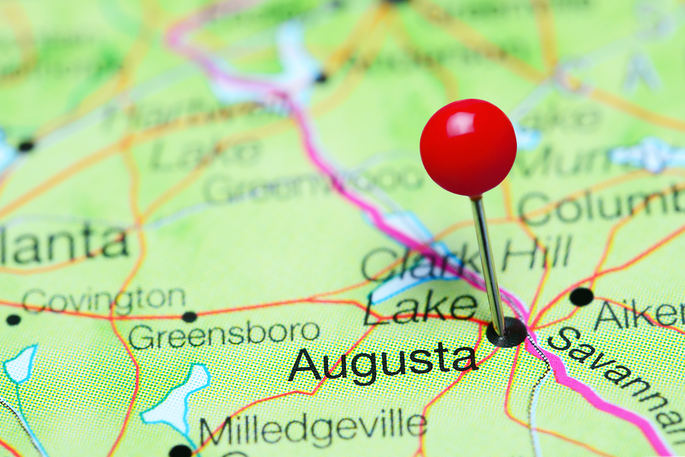
Jack Nicklaus is the most decorated player in Masters history winning the event no fewer than six times. What’s probably most astonishing from his six victorious is that his final one was made at the ripe age of forty-six, which to this day is the oldest winner of the event. As a result, Nicklaus, along with Arnold Palmer and Gary Player, has been named as an official starter for the event, hitting the first tee-shots on the Thursday morning before the start of play.
Tiger Woods has won the event on five separate occasions, making him the second most successful ever. He also holds the record for the youngest ever winner aged just twenty-one, and he also boasts the widest winning margin of twelve strokes and also the second lowest winning score of eighteen under (270).
The Augusta National course was originally a plant nursery and the committee were keen to keep some of its heritage by naming each hole after a shrub associated with each. Here are some other facts you might like:
- Jack Nicklaus has finished in the top ten more than any other player, doing so twenty-two times
- Dustin Johnson in 2020 won the Masters with the lowest score ever recorded at -20 (268)
- When Hideki Matsuyama won the Masters in 2021 he became the first Japanese golfer to win a Major
- Guan Tianlang holds the record for being the youngest player to compete in the Masters, being aged fourteen years and one hundred and sixty-eight days in 2013
- Tianlang is also the youngest player to make the cut of not only the Masters but any Major tournament
- Just four players in the history of the Masters have scored an Albatross, or double-Eagle. These are Louis Oosthuizen, Gene Sarazen, Bruce Devlin and Jeff Maggert
- Ben Hogan, Tom Weiskopf and Jack Nicklaus share the record for finishing as runners-up the most often, doing so four times apiece
